Related Content
Content

Make The Most Of The New D-Ticket for Germany
How to explore Germany by train for up to a month, with the new ticket which costs only €58!
Share
The Deutschland Ticket, also known as the D- Ticket, is a new option for exploring Germany by train.
It's significantly cheaper than national rail passes and offers the option to travel further, compared to using the 'Lander' regional day tickets.
The D-Ticket can be used for a money-saving holiday trip in Germany, but because the primary purpose of the ticket is to make travel cheaper for regular users of trains in Germany, there are three aspects of using the D-Ticket, which need to be front of mind:
- The ticket won't be cheaper when booked in advance, but whether you obtain the D-Ticket at a station ticket office or book it online you have to take a subscription, a monthly re-occurring fee.
So you will need to remember to cancel it at the conclusion of your trip, before the next payment is due. - D-Tickets are valid for month
- It can't be used on the express train services; the ICE trains and the IC (EC) trains.
The train services on which the D-Tickets can be used, regardless of which company is operating the trains, are:
- The local trains in German urban areas and cities which are known as S-Bahn services
- The local trains away from the major German cities, which are the RB services and are branded Regio services.
- The faster RE trains which connect cities and skip more stations than the S-Bahn and RB services; plus they also operate over longer routes not taken by the express trains, though they are also branded Regio services.
Children
If you will be travelling in Germany with children, the D-Ticket is less likely to be an overall money saver.
There are no child rates for D-Tickets, but in contrast up to four children can travel for free with a person aged 15 and over who has purchased a ticket for a journey by an express train service
Children also travel at no charge on the Regio trains if the adult ticket purchaser is a parent or grandparent.
Travelling on the Regio trains
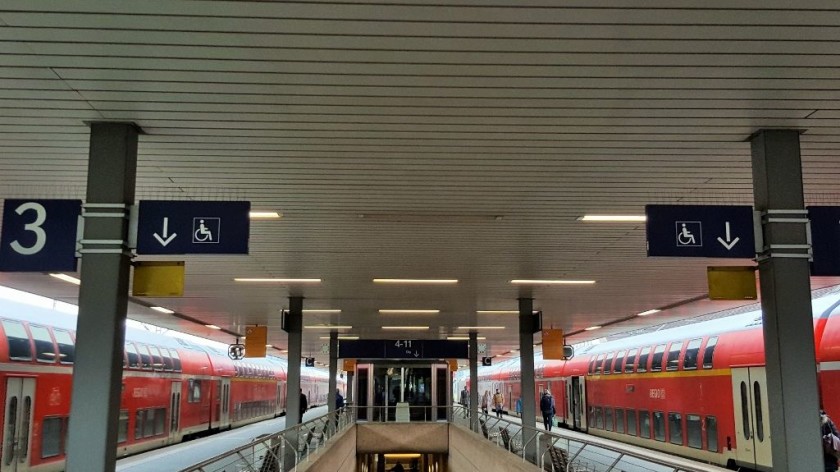
Away from the high speed lines, Regio train services travel along most German rail routes, but they don't cover such long distances as the express - IC and ICE trains.
Though some Regio trains operate the full length of useful longer routes, and these include:
- Aachen - Cologne/Koln - Dusseldorf - Essen - Dortmund - Hamm (west)
- Cologne/Koln - Bonn - Koblenz - Bingen - Mainz
- Koblenz - Troisdorf - Cologne/Koln - Monchengladbach
- Koblenz - Cochem - Trier - (Luxembourg)
- Koblenz - Cochem - Trier - Saarbrucken - Kaiserslautern - Mannheim
- Karlsruhe - Baden Baden - Offenburg - Villingen (Schwarzw) - Singen - Konstanz
- Karlsruhe - Baden Baden - Offenburg - Freiburg (Breisgau) - Basel
- Basel - Waldshut - Schaffhausen - Singen - Radolfzell - Friedrichshafen
- Stuttgart - Ulm - Friedrichshafen
- Munchen/Munich - Memmingen - Lindau
- Munchen/Munich - Augsburg - Donauworth - Steinach (b Rothenburg ob der Tauber) - Wurzburg
- Munchen/Munich - Regensburg - Hof
- Berlin - Angermunde - Greifswald - Stralsund
- Leipzig - Jena Paradies - Ludwigsstadt - Bamberg - Nurnberg/Nuremberg
However, what's more typical is that Regio trains travel on routes which link one city with its closest adjacent cities/urban areas.
As a result travelling to more distant cities often involves hopping between multiple Regio trains, connecting at the intermediate cities along the route.
Examples include:
- Koln > Dusseldorf > Osnabruck > Bremen > Hamburg = 6hr 44min
- Hannover > Gottingen > Kassel > Frankfurt = 6hr 7min
- Hamburg > Schwerin – Berlin = 4hr 17min
- Berlin > Dessau > Leipzig > Hof > Munich = 8hr 6min
- Munich > Wurzburg > Frankfurt = 5hr 49min
- Basel > Offenburg > Karlsruhe > Heidelberg > Mannheim > Frankfurt = 6hr 26min
Most main city stations, the hauptbahnhofs, are served by Regio trains on multiple routes.
So in addition to links to multiple other cities, the Regio services can also call in towns with access to popular tourist attractions, castles, museums or outstanding scenery.
Ideas for how to use D-Tickets
If you can arrange your German holiday so that it commences on around the 1st of a month, it's possible to take a national tour solely by the Regio trains.
The destination guides below will show you how to get to the next of these destinations by Regio trains, they have been arranged in an order that allows a circular route around Germany to be followed.
Another idea, which will save money when using D-Tickets, is to spend some time in more than one city and then use each city's Regio train services travel to multiple locations popular with tourists.
It can pay off to take ICE trains between more distant cities and then use the Regio trains once you are in your chosen destination.
If you will be making two or more long-distance journeys, purchasing a German railcard, a Bahn Card, can pay off.
Exploring Germany by train with a combination of a D-Ticket + a Bahn card + tickets to travel by the IC or ICE trains can be cheaper than using Eurail passes for Germany, or InterRail passes for Germany.
From Köln / Cologne
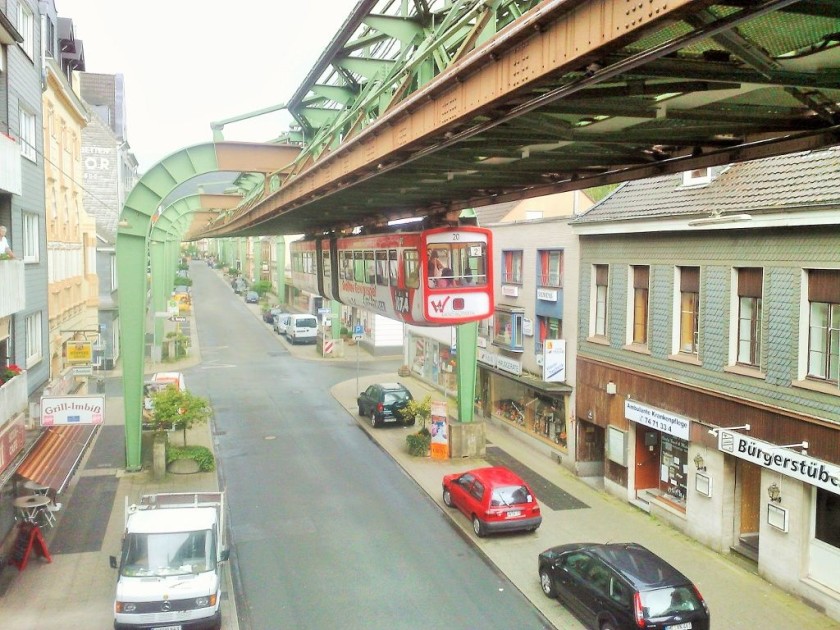
You can take direct Regio trains from Köln Hbf on multiple routes, including to:
- Aachen
- Essen (for the Folkwang Museum) and the Ruhr Museum in the Zollverein Complex
- two of the prettiest villages on the west bank of The Rhine River at St Goarhausen (St Goar) and Baccarach
- Head to Bochum HBf and connect for the local S3 route in order to go to the Bochum Eisenbahn Museum and / or visit the DB Museum in Koblenz which is an easy journey by train and local bus.
- Wuppertal, the location of the fabulous suspended railway.
Or head on to Bremen on the Regio trains by connecting in Dusseldorf and Osnabruck.
Then having spent some time in Bremen, take Regio trains on to Hamburg,
From Hamburg
You can take direct Regio trains from Hamburg Hbf on multiple routes, including from/to:
- Bremen
- Celle
- Schwerin, for its castle and for Regio trains on to Berlin
- Rostock - connect for the beaches at Warnemünde and for Bad Doberan to ride the Molli steam railway
Take the train on from Rostock to Stralsund, where connections are possible on to the island of Rugen, the location of the Rügensche BäderBahn steam railway.
Stralsund has direct Regio trains on to Berlin.
From Berlin
You can take direct Regio trains from Berlin Hbf on multiple routes, including from/to:
- Rostock
- Stralsund
- Potsdam
- Dessau - connect in Dessau for Leipzig
- Lutherstadt Wittenberg - connect in Lutherstadt Wittenberg for Leipzig
To the Harz Mountain Railway
Germany's most well known network of narrow gauge steam railways is most easily accessed from Berlin by taking an ICE train to Halle and connecting there for a Regio train to the junction station at Wernigerode.
On Mondays to Fridays it isn't possible to travel between Berlin and Wernigerode solely by Regio trains and to have sufficient time to make the most of rides behind the steam trains.
However, at weekends it's possible to use D-Tickets to make a return trip, because on Saturdays and Sundays a Regio train is typically scheduled to depart from Berlin Hbf at 07:23.
On arrival at Wernigerode there will be time to make a return trip to the highest Harz Mountain Railway station at Brocken, with the D-Ticket also being valid on the Harz Railway as far as Drei Annen Hohne, which is the junction station for the Brocken line.
From Leipzig
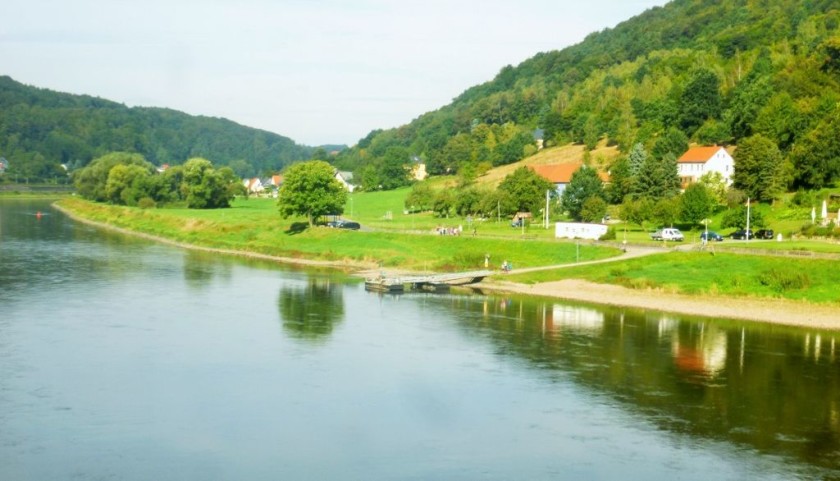
You can take direct Regio trains from Leipzig Hbf on multiple routes, including from/to:
- Bamberg, take Regio trains on to Nurnberg
- Dessau
- Dresden, connect in Dresden for Kurort Rathen, the closest station to the Bastei Bridge
- Jena, take Regio trains on to Bamberg and Nurnberg
- Weimar
- Hof - connect for Munchen/Munich
- Nurnberg / Nuremberg - connect for Munchen/Munich
From Nurnberg / Nuremberg
You can take direct Regio trains from Nurnberg Hbf on multiple routes, including from/to:
- Bamberg, take Regio trains on to Leipzig
- Leipzig
- Regensburg, connect for Munchen/Munich
- Augsburg - connect for Munchen/Munich; one of the few Regio train services on which the DB Ticket can't be used are the Regio trains between Nurnberg and Munich which use the high speed route via Ingolstadt.
To Rothenburg ob der Tauber
This charming town can be reached in around 1hr 15 mins by Regio trains from Nurnberg, but two connections are required in Ansbach and Steinach.
Look up the departure options before heading to Nurnberg Hbf as the Regio (RB) trains to Ansbach depart every other hour - typically only in even hours
To Heidelberg
You can also hop between Regio trains on a Nurnberg > Cralsheim > Helibronn > Heidelberg route; the journey time is around 4hr 30mins and it's possible to depart in every other hour, the trains to Cralsheim will be heading on to Stuttgart.
From München / Munich
You can take direct Regio trains from München Hbf on multiple routes, including from/to:
- Augsburg - connect for Nuremberg; one of the few Regio train services on which the DB Ticket can't be used are the Regio trains between Munich and Nuremberg which use the high speed route via Ingolstadt.
- Regensburg - connect for Nuremberg
- Garmisch Partenkirchen for Zugspitze, the Eibsee and the Wagenbrüchsee
- Fussen for Neuschwanstein Castle; in alternate hours connections are required in Murnau
- Prein am Chiemsee for Herrenchiemsee Castle
- Lindau - connect for Friedrichshafen and for Ulm
- Ulm - connect for Stuttgart
Destinations which require one simple connection
- Berchtesgaden; connect at Freilassing
- Rothenburg ob der Tauber; connect at Steinach (b Rothenburg ob der Tauber)
On to the Black Forest
There are two options for accessing The Black Forest by Regio train from München / Munich:
1: Head to Stuttgart by connecting in Ulm, then from Stuttgart take a train to Rottweil where connections are available into trains which take a route to Donaueschingen, which also calls in Villingen (Schwarzw) - connect for Offenburg.
2: Head to Lindau and connect there for Friedrichshafen.
There are trains from Friedrichshafen to Singen, where connections are available into trains which cross the forest on a route to Offenburg which calls in Donaueschingen and Villingen (Schwarzw).
The Black Forest
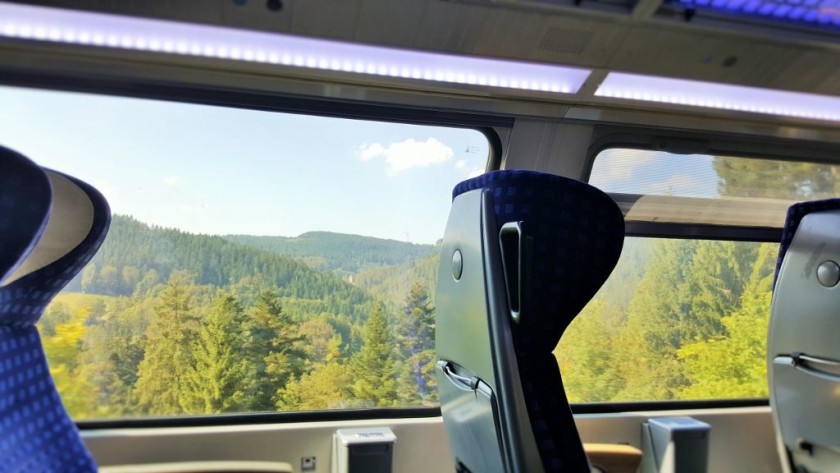
There are six primary rail routes across the Black Forest taken by Regio trains:
- The main service is Black Forest Railway which follows Offenburg > Gengenbach > Hausach > Triberg > Villingen (Shwarz) > Donaueschingen > Singen.
- The Kinzig Valley route goes from Hausach > Wolfach >Schiltach > Freudenstadt and then on to Karlsruhe; there are direct trains from Offenburg to Freudenstadt.
- There is a route between Freudenstadt and Horb.
- There is a route between Villingen (Schwarzw) and Rottweil.
- Trains take a Freiburg (Breisgau) > Titisee > Neustadt (Schwarz) > Donaueschingen route.
- The Three Lakes lines connects Titisee to Seebrugg and some trains operate direct Freiburg (Breisgau) and Seebrugg.
There are two north<>south routes taken by Regio trains on either side of the forest:
- to the east there is a Stuttgart > Horb > Rottweil > Singen route;
- west of the forest trains take a Basel > Freiburg (Breisgau) > Offenburg > Baden Baden > Karlsruhe route.
So Donaueschingen, Freiburg (Breisgau), Freudenstadt, Hausach, Horb, Offenburg, Rottweil, Titisee and Villingen (Schwarzw) are junction stations where connections can be made between trains.
The majority of The Black Forest routes have an hourly service, so hopping between trains is easily managed.
Offenburg is a good base for a couple of days spent exploring the best of The Black Forest by train.
If you want to combine exploring Bavaria by train from Munich, with seeing The Black Forest on a D-Ticket, the station at Singen acts as a gateway.
A Munich to Singen route involves connecting between trains in Lindau and Friedrichshafen, and at Singen you can take trains on to Offenburg and Titisee.
Connections are available at Karlsruhe when using D-Tickets to travel between The Black Forest and destinations to the north.
Karlsruhe Hbf has Regio trains to/from Freiburg (Breisgau), Offenburg, Stuttgart, Mannheim (connect for Trier) and Heidelberg.
Heidelberg
Heidelberg is one of Germany's most popular tourist destinations.
It can be accessed with a D-Ticket by taking Regio trains on these routes;
1: An hourly service to/from Karlsruhe - connect in Karlsruhe for Freiburg, Offenburg and Stuttgart; there are no direct Regio trains between Heidelberg and Stuttgart.
2: An hourly service on a scenic route to/from Helibronn; connect for Stuttgart.
You can also hop between Regio trains on a Nurnberg > Cralsheim > Helibronn > Heidelberg route; the journey time is around 4hr 30mins.
3: An hourly service to/from Mannheim (connect for Trier)
4: An hourly service to/from Frankfurt (Main) hbf, which also calls in Darmstadt; connect in Frankfurt (Main) hbf for Frankfurt Airport
The Moselle and Rhine Valleys
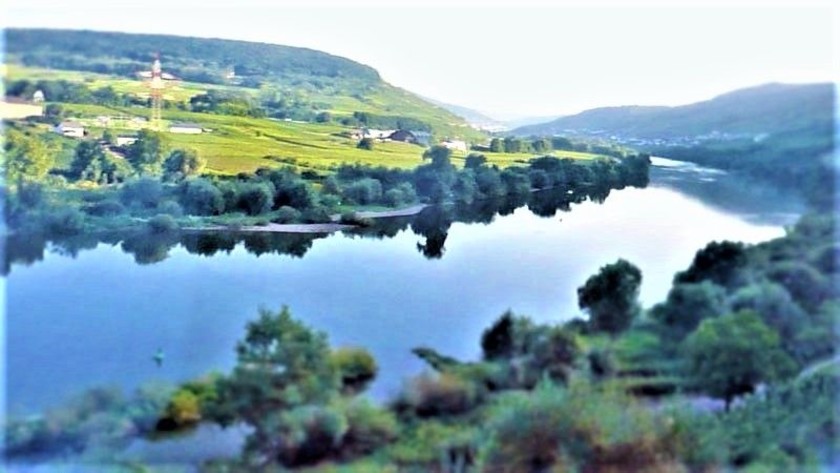
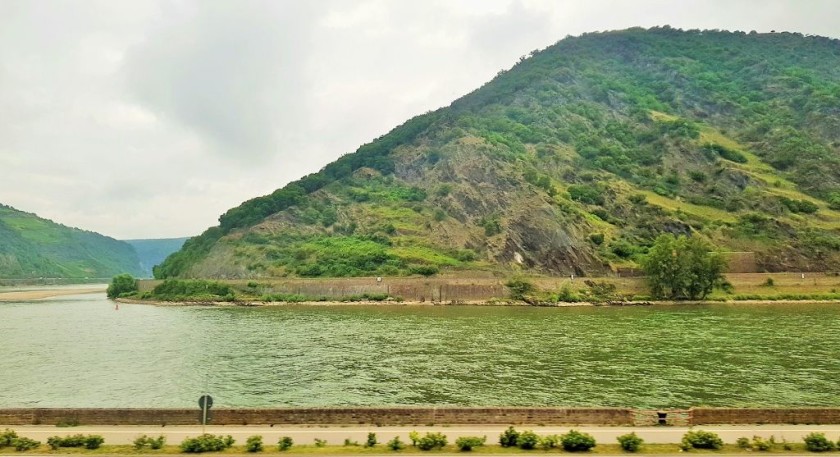
One of Germany's most beautiful railway routes travels through the Moselle Valley between Trier and Koblenz, the trains which come this way also call at Cochem, the location of the iconic Reichsberg castle.
Trier also has an hourly service of Regio trains to and from Mannheim, where connections are available with Regio trains to/from Heidelberg and Karlsruhe.
In addition to the Regio trains on the route to and from Trier, the junction station at Koblenz has trains which take multiple scenic routes along the banks of the River Rhine.
The most spectacular of which pass through the Rhine Gorge as they travel between Koblenz and:
- Bingen - Mainz - Frankfurt Flughafen/Airport - Frankfurt (Main) hbf; every other hour
- Weisbaden - Frankfurt (Main) hbf; hourly)
- Bingen - Mainz (connect for Karlsruhe); hourly
- Bingen - Kaiserslautern (connect for Mannheim and Trier); every other hour
Hourly fast Regio (RE) trains take two routes between Koblenz and Köln/Cologne:
- Travel along the east bank of the River Rhine on a route through Troisdorf; or
- Take trains along the west bank which call in Andernach, Remagen and Bonn.
Regional Day Tickets can be a better alternative
Even though the D-Ticket has been introduced, the German national rail operator DB, is still offering a range of regional 'Lander' day tickets.
In contrast the to the D-Ticket, these 'Lander' tickets are primarily aimed at holiday makers.
These Lander tickets costs from €23, so at face value they seem poor value for money in comparison to D-tickets, though if an individual only wants to make two day trips by train, 2 x Lander tickets are typically cheaper than 1 x D-Ticket.
However, a key feature of the Lander tickets is that they enable up to three other adults (aged 15 and over) to share the ticket for only €3 per person.
So if a group of four adults will be travelling together, 5 x Lander tickets is cheaper than 5 x D-Tickets.
Though the bigger tick in the box for using Lander tickets is that an adult using a Lander ticket can take up to three children* aged 6 to 14 with them at no extra charge.
So, for example, if a family group of two adults + two children aged 9 and 12 wanted to to travel for for six days, the Lander Tickets is always cheaper than using D-Tickets; and in some regions, 7 x lander tickets, will be cheaper than 7 x D-Tickets.
*= children aged 5 and under travel for free, regardless of whether a Lander or D-Ticket is used.

Simon Harper
I wanted to share my passion for train travel and explain how anyone can take the fantastic journeys I have taken.

This is one of more than 100 train travel guides available on ShowMeTheJourney, which will make it easier to take the train journeys you want or need to make. As always, all images were captured on trips taken by ShowMeTheJourney.
This second version of ShowMeTheJourney is exciting and new, so we are genuinely thrilled that you are here and reading this, but we also need your help.
We’re striving not to let anything get in the way of providing the most useful service possible, hence a facility has been set up with DonorBox which can be used to support the running costs and make improvements.
Instead of advertising or paywalls, your financial support will make a positive difference to delivering an enhanced service, as there’s a lot of ideas which we want to make happen.
So if you have found the info provided here to be useful, please consider saying thank you.
